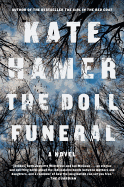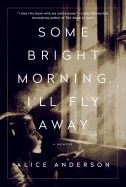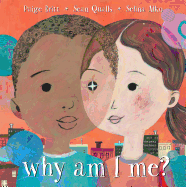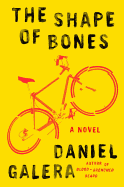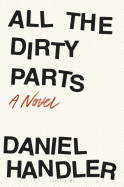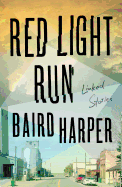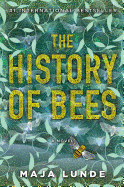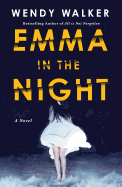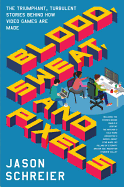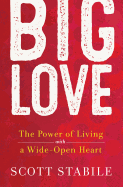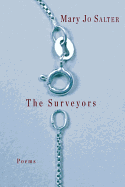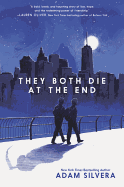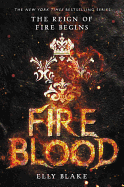Friday, September 15, 2017
The dog days of summer ended a few weeks ago. It's been a long, hot time, physically and psychically. Our collective blood pressure could use a bit of lowering; we need some self-soothing. We need books about dogs, with hope and happy endings.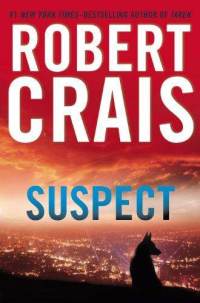 One of my favorite "dog" books is Suspect by Robert Crais (Penguin, paperback). In it, LAPD cop Scott Jenkins is suffering from PTSD after he almost died, and his partner was killed. Maggie is a German shepherd with PTSD who lost her beloved handler in Afghanistan; she was severely wounded herself. They are thrown together for a chance at redemption, although odds are against them. The prologue describing Maggie's last ghastly day in Afghanistan is harrowing, but the respect and love that grows between her and Scott is healing for them and for the reader. There aren't many books I've re-read. This is one.
One of my favorite "dog" books is Suspect by Robert Crais (Penguin, paperback). In it, LAPD cop Scott Jenkins is suffering from PTSD after he almost died, and his partner was killed. Maggie is a German shepherd with PTSD who lost her beloved handler in Afghanistan; she was severely wounded herself. They are thrown together for a chance at redemption, although odds are against them. The prologue describing Maggie's last ghastly day in Afghanistan is harrowing, but the respect and love that grows between her and Scott is healing for them and for the reader. There aren't many books I've re-read. This is one. In From Baghdad, with Love by Lt. Col. Jay Kopelman (Lyons Press, paperback), a puppy and a Marine meet unexpectedly in a war zone. Kopelman's memoir is gritty and black-humored, the chaos and brutality of war front and center. That hard reality becomes tempered when he finds a puppy while his unit sweeps an abandoned house in Fallujah. "I liked the way he felt in my hands. I liked that he forgave me for scaring him. I liked not caring about getting home or staying alive or feeling warped as a human being--just him wiggling around in my hands, wiping all the grime off my face." They smuggled the pup, Lava, into camp, and Kopelman was determined to ship Lava stateside, an extremely difficult task, but worth it--Lava "unlocked [his] cool," allowing him to fear, which led to dealing with PTSD.
In From Baghdad, with Love by Lt. Col. Jay Kopelman (Lyons Press, paperback), a puppy and a Marine meet unexpectedly in a war zone. Kopelman's memoir is gritty and black-humored, the chaos and brutality of war front and center. That hard reality becomes tempered when he finds a puppy while his unit sweeps an abandoned house in Fallujah. "I liked the way he felt in my hands. I liked that he forgave me for scaring him. I liked not caring about getting home or staying alive or feeling warped as a human being--just him wiggling around in my hands, wiping all the grime off my face." They smuggled the pup, Lava, into camp, and Kopelman was determined to ship Lava stateside, an extremely difficult task, but worth it--Lava "unlocked [his] cool," allowing him to fear, which led to dealing with PTSD.
Why do these stories resonate so strongly? Robert Crais said, "That's what I wanted to write about. The purity in Maggie's heart. And by extension, all dogs' hearts. It's why we love dogs, I think, and why dogs love us." --Marilyn Dahl
The Shape of Bones
by Daniel Galera
Daniel Galera, an influential Brazilian writer who won the 2013 São Paulo Prize for Blood-Drenched Beard, has written a gripping and tender coming-of-age novel about a successful young man wrestling with guilt and inactions of his past.
Hermano is an up-and-coming surgeon who uses mountain climbing as a meditative exercise to recharge his batteries. As Hermano leaves for an ice-climbing trip to Cerro Bonete with best friend Renan, he reflects on his real reasons for the trip. He hopes to escape his job, a comfortable marriage to a restless wife and a life "in third gear and cruising at about 25 miles an hour, almost completely unaware of what was going on around him, as if the eyes and limbs driving the car were controlled by an operations centre entirely independent of the one responsible for his incessant flow of thoughts." Hermano detours to his old Porto Alegre neighborhood to retrace guilty memories that resulted in the mundane quality of his adulthood. He recalls being a shy 15-year-old with obsessive, "crazy routines of bike rides, runs and solitary exercise" when he befriended bully and town thug Bonobo, and considers how this one relationship shaped the course of his adult life.
The contrast between past and present evokes both hope that memory can serve as a lesson to reverse life's present trajectory, and pain in the guilt of actions not taken. Galera's passages are beautifully crafted snapshots of nostalgic adolescent moments, when childhood innocence gives way to adult concerns. --Nancy Powell, freelance writer and technical consultant
Discover: Daniel Galera's powerful and visceral coming-of-age novel explores how the painful moments of adolescence influence the choices adults make.
All the Dirty Parts
by Daniel Handler
Daniel Handler's raunchy, sex-drenched, stream-of-consciousness novel All the Dirty Parts reads like Portnoy's Complaint set in high school. Teenager Cole is obsessed with online porn and has earned a reputation around his high school for having effortless sex with a lot of his female classmates. Now, his relationship with his pal Alec has turned sexual. The bulk of this slim novel covers the teenage sexploits and extreme emotions that erupt in Cole's journal when he starts dating a sexually voracious exchange student named Grisaille. "There are love stories galore, and we all know them," Cole writes. "This isn't that. The story I'm typing is all the dirty parts."
What's refreshing about All the Dirty Parts is how Handler avoids turning Cole's world into a simple teen sex comedy. Although, Cole's asides can be hilarious ("Four years ago I think, I thought anal sex just meant you were really particular about it"). Handler's portrait of adolescent sexuality--with its raging urges, fumbling exploration, euphoric discoveries and sudden emotional pitfalls--is brash, messy, endearing, sexually explicit and haunting. Although Cole often writes in disjointed sentences as he tries to sort through new erotic discoveries and surprising emotional entanglements, the people in his life are full-bodied and the emotions they feel are authentic.
Those who ban books will not be happy, but adults and mature teen readers will find this novel irresistible. Handler (aka Lemony Snicket, author of numerous children's books) has written a gutsy, raw and funny slice of teenage life that few will ever forget. --Kevin Howell, independent reviewer and marketing consultant
Discover: Daniel Handler's brief but unforgettable novel of sexual experimentation in high school and the messiness of first love is endearing, funny, explicit and haunting.
Red Light Run
by Baird Harper
In a sharp narrative debut of connected stories, Baird Harper (winner of the 2010 Nelson Algren Literary Award) captures the ethos of fictional Wicklow, Ill. It is a wrung-out town where the abandoned steel mill and burned-down trailer park have been turned into a "postapocalyptic paintball battlefields." The formerly bustling town center now consists of "a single intersection where a motel, a pharmacy, a bar, and a Planned Parenthood faced off at a stoplight." Its only economic beacons are a riverboat casino and a prison. Hartley Nolan is about to walk out of the latter early from an eight-year sentence for DUI and vehicular manslaughter. Despairingly drunk after a failed intervention for his alcoholic wife, he ran a red light and killed Wicklow's favored young mother Sonia.
Shifting back and forth in time, the stories in Red Light Run deftly portray the antecedents and aftermath of this careless mistake. No one escapes. Hartley endures a dysfunctional wife and scatterbrained mother. He is stalked by Sonia's husband and her childhood family caretaker, out to avenge her death. As if that is not enough, he's also pestered by Sonia's grieving sister, Allie, who has a fitness-driven husband pushing self-help books on her while "standing in the living room in capri pants drinking a kale shake, looking healthy and organized to such an alarming degree that Allie was beginning to view it as an act of aggression." Harper adeptly captures the details of small-town life--like the brined Thanksgiving turkey sitting in the fridge, "a great shivering load bullying the orange juice and milk containers." In Harper's Wicklow, we find strikingly rendered broken people searching for glue to put their lives back together. --Bruce Jacobs, founding partner, Watermark Books & Cafe, Wichita, Kan.
Discover: The finely etched stories in Harper's first collection capture the impact of a fatal car wreck on the troubled families of a small town in Illinois.
The History of Bees
by Maja Lunde, transl. by Diane Oatley
The History of Bees offers a warning to readers: protect the earth's bees, or there could be drastic consequences in the future. Though the dystopian future Maja Lunde has imagined--a world of limited food resources and collapsing economies--is fictional, the possibilities she has imagined due to the death of bees are based on science. Lunde writes with great historical detail about beekeeping, beekeepers' histories and the development of scientific research. These realities serve to bring Lunde's lush story to life as the novel moves among three interconnected stories. Tao and Kuan, parents to three-year-old Wei-Wen in 2098 China, do the one-time work of the now deceased bees, manually pollinating flowers. William Savage, natural scientist hopeful and failing shopkeeper in 1851 England, aims to make his mark on the world by designing a new tool for the study of bees. And George, a United States beekeeper and farmer in 2007, faces the decimation of his stock of bees as the decline of bee populations across the world threaten the sustainability of food production.
The History of Bees feels fractured at times. Short chapters with frequent jumps between characters and time periods make it hard to grasp the novel's depth at first, and harder still to become invested in any one character's story. But as the three stories move together, Lunde's novel proves a powerful cautionary tale about the human condition, scientific inquiry and the importance of bees in sustaining our ecosystems--and what happens when all three collide. Readers interested in sustainability or realistic dystopias will find much to enjoy in Lunde's first novel for adults. --Kerry McHugh, blogger at Entomology of a Bookworm
Discover: Maja Lunde's dystopian novel combines history and imagination to offer a cautionary tale of what the world could look like if the earth's bees disappear.
Mystery & Thriller
The Doll Funeral
by Kate Hamer
Welsh author Kate Hamer thrilled the literary world with her gripping debut, The Girl in the Red Coat. With her follow-up, the lyrical and neo-gothic The Doll Funeral, she continues to astonish. Told from three points of view--those of 13-year-old Ruby, her mother, Anna, and the ghostly Shadow Boy--Hamer's novel opens in a modest house in the Forest of Dean, on Ruby's birthday. Her parents tell her that she's not their biological daughter, that she arrived on their doorstep when she was very young and not long after the death of their own small child. Having been beaten repeatedly by her father--and neglected by her mother--Ruby is elated by the news, and with the help of Shadow Boy, her constant companion that only she can see, vows to find her birth parents.
What follows is a moving and mesmeric story about one girl's search for the truth in a world where nothing is quite as it seems and no one is who they at first appear to be. Adding to the mystery of her parents' whereabouts is Ruby's uncertain grasp of reality. At times, the people she meets seem barely of this earth, with their bone-white skin and hollowed faces. Shadow Boy, for instance, moves through the air as if made of literal shadows, and events Ruby swears she witnessed first-hand prove never to have taken place. Quick-paced and beautifully written, The Doll Funeral brims with a delightful, riveting strangeness. --Amy Brady, freelance writer and editor
Discover: Ghostly figures and strange events follow a young girl as she searches for her birth parents in this neo-gothic thriller.
Emma in the Night
by Wendy Walker
Cass Tanner and her older sister, Emma, disappeared three years ago. Emma's car and belongings were found at the beach, long thought to be evidence she drowned or committed suicide. Of 15-year-old Cass, there was no sign; she simply vanished. Now Cass has returned, knocking on her mother's door out of the blue. Alone.
Wendy Walker's Emma in the Night is a storytelling mind-meld that takes place over the seven days after Cass comes home. The narrator, she admits her story is a deception. By using Cass to recount the story of the girls' purported disappearance and captivity to their family and the authorities, Walker amplifies the potential misdirection.
There is no doubt Cass has a plan she's not revealing. Her mysterious game relies on the reactions of others, particularly her mother, a pathologic narcissist, and forensic psychiatrist Abby Winter, who also suffered under the reign of a narcissistic parent. Dr. Winter's insights make her the one person who may be able to suss out Cass's true purpose and discover what became of Emma.
Walker (All Is Not Forgotten) has developed empathetic characters to root for and villains to loathe in a blended family fated by dysfunction. The layered narrative creates a difficult balance that Walker handles skillfully to minimize confusion. Dr. Winter comes across as more of a storytelling tool than a character to embrace, but the story she enhances is a fascinating portrait of the narcissistic pathology dynamic and what's left in its wake. --Lauren O'Brien of Malcolm Avenue Review
Discover: One of two missing sisters returns home and intentionally deceives her family and the police about their disappearance as a means to her mysterious ends.
Biography & Memoir
Some Bright Morning, I'll Fly Away
by Alice Anderson
When Hurricane Katrina struck Ocean Springs, Miss., Alice Anderson and her three young children joined the long procession of refugees fleeing the area. Huddled in a motel room, watching the devastation unfold on TV, she was eager to return to her beautiful home, if it still existed, and the life she had carefully crafted. Little did she know that the natural disaster was the tipping point for a series of events that would completely dissolve the life she'd known. Her husband, a doctor with severe OCD, came unhinged due to the chaos and attacked her with a knife, forcing Anderson to escape with the clothes on her back and the children.
Anderson has written a gripping and emotionally charged account of the more than 10 years she battled her husband psychologically, emotionally and legally for the custody of their children, as she tried to push aside the years of abusive behavior she'd endured. Anderson slowly reveals the writing and modeling life she had prior to marriage and the consistent and crushing methods her husband used to demean and denigrate her, forcing her to lose self-esteem and a sense of identity. She also explains how terrifying it was to be a single mom fighting for her children in the Mississippi court system, where her poetry was misconstrued and used against her. Anderson's story is scary, heartwrenching yet ultimately uplifting, filled with the self-determination and love a mother has toward her children and herself. --Lee E. Cart, freelance writer and book reviewer
Discover: A woman battles her abusive husband for custody of their three children in the aftermath of Hurricane Katrina.
Business & Economics
Blood, Sweat, and Pixels: The Triumphant, Turbulent Stories Behind How Video Games Are Made
by Jason Schreier
Most people know little about the process behind creating video games. Even players, casual or otherwise, usually have a only a cursory understanding of how many people, years and iterations it takes to make their favorite games. Jason Schreier's Blood, Sweat, and Pixels pulls back the curtain, diving deep into the creation of 10 games to show how difficult the process is. Readers may be amazed that games are completed at all.
Using each chapter as a case study, Schreier (a respected games journalist and news editor at the website Kotaku) interviews designers, studio heads and other makers about the rough road to publication. Each game he studies faced a catastrophe before launching, and Schreier uses their examples to make broader observations about the industry and games as an art form. Blood, Sweat, and Pixels isn't necessarily trying to make philosophical points about the nature of gaming, or art, but by exposing how people craft games, he gives the reader a better perspective as to why video games exist as they do.
Schreier runs the gamut of games, from those that cost millions of dollars with hundreds of employees, to Stardew Valley, one man's five-year solo project. With lively writing, Schreier observes how small, medium and large studios tackle a range of problems. For fans of video games, Blood, Sweat, and Pixels is a must read, but anyone interested in stories about the hard process of making art is also sure to enjoy it. --Noah Cruickshank, adult engagement manager, the Field Museum, Chicago, Ill.
Discover: In Blood, Sweat, and Pixels, journalist Jason Schreier takes readers deep into the frustrating, wonderful world of making video games.
Body, Mind & Spirit
Big Love: The Power of Living with a Wide-Open Heart
by Scott Stabile
Life has thrown Scott Stabile (Just Love) countless curveballs. When he was 14, his parents were murdered at their Detroit grocery store, leaving Stabile and his six siblings orphaned. Nine years later, his brother died from a heroin overdose. As a young adult, Stabile became entangled with a spiritual cult; his decision to break away resulted in being ostracized by once-close friends. Then, a significant professional setback left him questioning his life's direction and meaning.
Stabile shares how his personal traumas have provided opportunities for growth while also shaping his sense of identity and purpose. "The hardest experiences of our lives never stop living with us," he writes. "They move forward into our day-to-day existence, and we are left to decide how we want to integrate the pain." For Stabile, that means approaching his relationships with everyone--his siblings, his partner, his Facebook community of more than 350,000 followers and even his parents' murderer--from a foundation of love.
In Big Love, Stabile isn't afraid to let his vulnerability show while reflecting on his own journeys of excavating buried pain, acknowledging fear, finding paths towards forgiveness (including from ourselves), living authentically and developing resilience. He offers a sincere blend of honesty and humor while replacing platitudes with perspectives grounded by individual experiences.
"We are, each of us, forced to survive circumstances we would never have consciously chosen for ourselves. We're all dealing with the reality of some of our feared what-ifs. In those realities, however, lives our strength and resilience, our ability to handle the unpredictable and sometimes tragic aspects of life." --Melissa Firman, writer, editor and blogger at melissafirman.com.
Discover: After devastating losses, one man finds direction and purpose in life through cultivating love and compassion.
Poetry
The Surveyors: Poems
by Mary Jo Salter
The most surprising thing about Mary Jo Salter's poetry collection The Surveyors is how fun and charming it is, though not without a degree of profundity. To say Salter is an experienced poet is an understatement. Not only has she authored several poetry collections, such as Nothing by Design, but she's also served as poetry editor for the New Republic and co-editor of The Norton Anthology of Poetry. In The Surveyors, she showcases her impeccable form, her lines as tight and sharp as rapiers, yet her tone always playful.
It's a tone she sets right away in "Yield": "and more letters wanting/ to play came to me/ alone to untangle." Such play is evident throughout the collection's four sections. It surfaces in Salter's ironically euphonic portraits of salty characters. In "The Profane Piano Tuner," for example, terse, pleasantly rhyming lines reveal the tale of a piano tuner who verbally abuses the speaker of the poem's piano while tuning it precisely: "Hour after hour he'd swear/ You filthy whore, Oh don't you dare." The piano tuner's profanity becomes enough of a problem that the speaker must let him go, but in her own musing fashion, Salter ends the poem with an ironic twist in which the speaker's young daughter sits down at the devilishly tuned piano "and played a Chopin prelude like an angel."
Smart, quirky and offbeat, yet finding truth and beauty in uncommon places, The Surveyors is a poetry collection to cherish. --Scott Neuffer, writer, poet, editor of trampset
Discover: Poet Mary Jo Salter addresses both the quotidian and the profound with versatile humor and voice in this wide-ranging collection.
Children's & Young Adult
Why Am I Me?
by Paige Britt, illus. by Selina Alko and Sean Qualls
Somewhere in a city, people are homeward bound at day's end. Among the commuters are a skateboarding boy and presumably his father; walking slightly ahead are a violin case-carrying girl accompanied by a flower-toting woman, most likely her mother. Waiting for the subway, boy and girl inevitably notice one another: he's African American, she's not; he's movement-ready, she's musically inclined. For all their differences, their thoughts echo in unison. "Why am I me," the boy wonders as the train approaches, "and not you?" From inside the subway, the girl mirrors back, "Why are you, you... and not me?"
Surrounded by kids and adults of diverse backgrounds--distinguishable by skin color, hair, head coverings and more--the two children's musings about who they are and who the other might be easily bounce back and forth while the subway whooshes by playing fields, neighborhoods and an open amphitheater. The children eventually alight under the same starry sky, and greet each other with "hi...," serendipitously turning "me" to the promise of we.
Author Paige Britt alchemizes the "big questions [she's been asking] since she was a small child" to create her debut picture book, encouraging soul-searching dialogues with oneself and others. Husband-and-wife artists Sean Qualls and Selina Alko (The Case for Loving) enhance the profundity of Britt's prose with amplifying small details. For example, newsprint is used as window shades or building facades, subtly and brilliantly reminding readers how stories can be found behind every window, every door, every wall; the sometimes-legible newspaper type points to a larger world beyond, including Great Britain, Italy, even Gaza. On every spread, the ingenious duo depicts America's multicultural citizens, ensuring myopic xenophobia has no place on Britt's welcoming, hopeful pages. --Terry Hong, Smithsonian BookDragon
Discover: A boy and girl, both on their way home, silently wonder about their diverse, individual identities, until a single-word greeting turns "I" and "me" into an opportunity to share "we."
They Both Die at the End
by Adam Silvera
Mateo is a homebody. Raised by his father, he does a lot of his living vicariously through the Internet. In Mateo's similar but alternate version of our present, there is a company, Death-Cast, that calls people--Deckers--to let them know they will die within the day--not how they will die, just that they will die before the clock strikes midnight. At 12:22 a.m., Mateo gets a call from Death-Cast.
At 1:05 a.m., Rufus is beating his ex-girlfriend's new boyfriend to a bloody pulp. His phone begins to ring. Recently orphaned, Rufus already has some experience with Death-Cast: they called a few months ago to announce that his mother, father and sister would all be leaving him in the same day. Now, they're calling for him. Rufus finishes with the boyfriend and gets his best friends together, only to find himself running away from his own funeral as the cops come after him for assault.
Now both alone, Mateo (whose father is in a coma) and Rufus meet through an app designed to give lonely Deckers someone with whom they can spend their last day. As the day goes on, Rufus drags Mateo out of his shell ("Wow," he says, "you're like a tourist in your own city"), Mateo helps Rufus come to appreciate himself, and their relationship develops into something more than a friendship. Their dialogue is fun and funny, tender and affecting. Toward the end of their day, Mateo asks, "Weird question: Do you believe in the afterlife?" "That's not weird," Rufus answers, "we're dying."
Told in Mateo and Rufus's alternating first-person present narration with occasional third-person accounts from individuals who interact with the two on their last day, Silvera's (History Is All You Left Me) novel offers a fast-paced countdown to the inevitable, heartbreaking ending. --Siân Gaetano, children's and YA editor, Shelf Awareness
Discover: Two young men meet and make the most of life on their last day alive.
Fireblood
by Elly Blake
As the first installment of the Frostblood Saga concluded, Fireblood Ruby and Frostblood Arcus joined their powerful gifts to destroy the icy throne of Tempesia, that "timeless symbol of Frostblood rule." Rather than defeating its curse, their attempt released the Minax, a "haunting, shadowy creature" trapped within. This creature had influenced the previous Frostblood king, convincing him to butcher all of the Tempesian Firebloods. Although Firebloods still rule in their homeland of Sudesia, in Tempesia only Ruby survived.
Now, in book two, Arcus is king of Tempesia, ruling over a fractious Frostblood Court. Ruby fears the "bone-deep distrust" between Frostbloods and Firebloods makes her presence a liability to the new king's efforts to unite his people. Even though Arcus insists that she stay, Ruby joins the rakish Fireblood Kai on a journey to Sudesia, where the fire throne can be found; trapping and controlling the Minax imprisoned in the fire throne may be her best hope for destroying the murderous Minax back home. Unfortunately, Kai has hidden motives for bringing her to the court of the Fireblood queen. As a Tempesian and close friend of the Frostblood King, Ruby finds herself fighting for her life and her freedom, all the while trying to gather the knowledge she needs to destroy the curse of the Minax, put an end to the growing discord and destruction and mend relations between two bitterly divided countries.
Ruby's fiery nature leads to some rash decisions, but her flaws make her an extremely likable heroine. Her adventuring is balanced with light touches of romance, and there is more than enough intrigue to satisfy. Fans of Frostblood will find themselves smitten with this second installment, and the breathtaking climax will leave them eagerly awaiting the third. --Lynn Becker, blogger and host of Book Talk, a monthly online discussion of children's books for SCBWI
Discover: Fireblood Ruby travels from Tempesia's Frostblood Court to the fire kingdom of Sudesia, where she must destroy the fire throne and gain control of the cursed spirit within.
| Advertisement Meet belle bear! |


